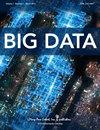The Constraints of The Adoption of Gamification for Education and Training in Higher Education Institutions: A Systematic Literature Review
IF 2.6
4区 计算机科学
Q2 COMPUTER SCIENCE, INTERDISCIPLINARY APPLICATIONS
引用次数: 0
Abstract
Gamification, a concept that describes the use of game design elements in non-game scenarios, inan attempt to induce fun and motivation in non-game scenarios, has found application in a variety of contexts. In education, popular gamification elements that have been introduced to make learning fun includes the use of points, levels, missions, leaderboards, badges, and avatars. New gamification such as the use of social robots is now in vogue. Despite the enormous potential of these gaming concepts, researchers have unearthed some challenges that face the adoption of gamification in educational systems of Higher Education Institutions. In this study's systematic literature review, the PRISMA (Preferred Reporting Items for Systematic Reviews and Meta-Analyses) framework was used to explore the difficulties encountered when using gamification in training and education at colleges and universities and tosuggest potential solutions. Several researches that employed gamification were elicited from databases such as google scholar, Scopus and research gate. The shortcomings encountered during the deployment of gamification in these studies were summarized. The study's findings reveal that he difficulties encountered when adopting gamification in education and training in higher education institutions can be divided into three categories: design concerns, issues with short-term engagement, and problems with user adaptability. Likewise, potential fixes for the issues were mapped out for future designers of educational gamified systems to follow.高等院校教育培训采用游戏化的制约因素:系统文献综述
游戏化是一个描述在非游戏场景中使用游戏设计元素的概念,它试图在非游戏场景中引入乐趣和动机,并在各种情境中得到应用。在教育领域,为使学习变得有趣而引入的流行游戏化元素包括使用点数、关卡、任务、排行榜、徽章和化身。新的游戏化,如社交机器人的使用,现在很流行。尽管这些游戏概念具有巨大的潜力,但研究人员发现了在高等教育机构的教育系统中采用游戏化所面临的一些挑战。在本研究的系统文献综述中,使用PRISMA(系统评价和荟萃分析的首选报告项目)框架来探索在高校培训和教育中使用游戏化时遇到的困难,并提出潜在的解决方案。一些使用游戏化的研究是从google scholar、Scopus和research gate等数据库中提取出来的。总结了在这些研究中部署游戏化过程中遇到的缺点。研究结果显示,高等教育机构在教育和培训中采用游戏化时遇到的困难可以分为三类:设计问题、短期参与问题和用户适应性问题。同样,我们也为未来的教育游戏化系统设计师列出了潜在的修复方法。
本文章由计算机程序翻译,如有差异,请以英文原文为准。
求助全文
约1分钟内获得全文
求助全文
来源期刊

Big Data
COMPUTER SCIENCE, INTERDISCIPLINARY APPLICATIONS-COMPUTER SCIENCE, THEORY & METHODS
CiteScore
9.10
自引率
2.20%
发文量
60
期刊介绍:
Big Data is the leading peer-reviewed journal covering the challenges and opportunities in collecting, analyzing, and disseminating vast amounts of data. The Journal addresses questions surrounding this powerful and growing field of data science and facilitates the efforts of researchers, business managers, analysts, developers, data scientists, physicists, statisticians, infrastructure developers, academics, and policymakers to improve operations, profitability, and communications within their businesses and institutions.
Spanning a broad array of disciplines focusing on novel big data technologies, policies, and innovations, the Journal brings together the community to address current challenges and enforce effective efforts to organize, store, disseminate, protect, manipulate, and, most importantly, find the most effective strategies to make this incredible amount of information work to benefit society, industry, academia, and government.
Big Data coverage includes:
Big data industry standards,
New technologies being developed specifically for big data,
Data acquisition, cleaning, distribution, and best practices,
Data protection, privacy, and policy,
Business interests from research to product,
The changing role of business intelligence,
Visualization and design principles of big data infrastructures,
Physical interfaces and robotics,
Social networking advantages for Facebook, Twitter, Amazon, Google, etc,
Opportunities around big data and how companies can harness it to their advantage.
 求助内容:
求助内容: 应助结果提醒方式:
应助结果提醒方式:


